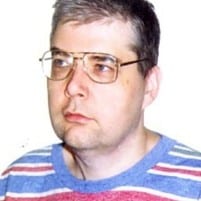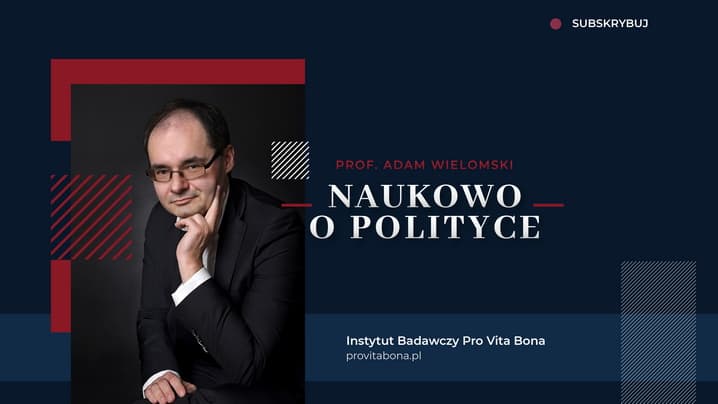Star Wars (original theatre-version length 121 minutes) is the George Lucas masterpiece that has led to the emergence of one of the most salient of the current-day pop-culture mega-franchises. One tribute to the movie series is that tens of thousands of people in surveys of religious belief in (for example) Great Britain, have stated their religious affiliation as “Jedi Knight”. The mystical martial order of the Jedi is one of the main elements around which the whole Star Wars universe revolves. The archetypal weapon of the Jedi Knights is the “light-saber” or laser-sword – a fascinating combination of the archaic and the futuristic. Some commentators have traced the origins of the term to the Japanese “jidaigeki” (which in English means “period dramas” and refers to films typically featuring samurai). George Lucas had visited Japan in the early 1970s, and was influenced, for example, by the 1958 Akira Kurosawa film, The Hidden Fortress. Lucas was also clearly influenced – among many other strands — by the 1930s U.S. serials such as Flash Gordon.
The movie begins with the written lines, “long ago, in a galaxy far, far away.” Then there comes the scrolling written introduction, which quickly sets the scene for us. And the astounding music of John Williams and the London Symphony Orchestra immediately begins. The original soundtrack for Star Wars, with its echoes of Wagner, Orff, and Holst, is often acclaimed as the best soundtrack ever heard in film. George Lucas deliberately chose to have a classical music soundtrack, rather than a “modern-sounding” electronic-based one. It may suggest the “timelessness” of his story.
Star Wars was one of the first major movies that was consciously planned with a story arc
extending over at least three films. Indeed, George Lucas had as many as nine movies in mind at one time. The original Star Wars movie has therefore been designated as Episode IV: A New Hope in the grand story. It was followed by Episode V: The Empire Strikes Back (1980) (which has been acclaimed as better than even the first movie, a truly rare occurrence for sequels), and Episode VI: Return of the Jedi (1983) (which was just slightly less acclaimed).
George Lucas’ marriage disintegrated a few years after the release of Return of the Jedi, and he thought at the time that it was unlikely he would ever return to do a theatrical movie of the so-called prequel trilogy. Nevertheless, he returned to work on the prequel trilogy in the late 1990s, and moved it to completion: Episode I: The Phantom Menace (1999); Episode II: Attack of the Clones (2002); and, Episode III: Revenge of the Sith (2005). The reaction to the prequel trilogy has been very mixed, and only Episode III has received considerable acclaim. In the prequel trilogy, Lucas was also said to have seriously mis-stepped with a comic-relief character deemed by some to be a “racist stereotype” – Jar Jar Binks. Those who had wanted to hate George Lucas and the Star Wars movies found a ready-made pretext. It could be argued that, in more recent years, the exigencies of political-correctness and multiculturalism have ever more seriously impacted the original vision of the franchise.
The original Star Wars movie begins “in medias res” (“in the middle of things”). An Imperial Star Destroyer is pursuing a much smaller ship carrying the Princess Leia (Carrie Fisher). As the hatchway is broken down and the Imperial Stormtroopers swarm in, the sinister figure of the black-armor-encased Darth Vader (David Prowse; voiced by James Earl Jones) emerges into view. The distinctive voice of Darth Vader, with its belaboured breathing, is one of the leitmotifs of the movie.
Princess Leia has managed to entrust the vital “Death Star” plans and a holographic message to R2-D2 (ar-too-dee-too) (a short squat robot) (Kenny Baker) and his long-time friend, the golden robot C3PO (see-three-pee-oh) (Anthony Daniels) – who flee in an escape pod to the nearby desert-planet, Tatooine.
Eventually, the robots come into the dwelling-place of Luke Skywalker (Mark Hamill), who is unhappily living as a farmhand with his uncle and aunt. Seeking to return the droids to Obi-wan Kenobi (Alec Guinness), Luke reaches the wise old man, whom he knows as Ben Kenobi. Luke realizes that his uncle and aunt are in danger, and, in a classic scene, returns to find them dead and his old home devastated.
As Luke stares at the destruction, he can be seen as making the psychological transition from “teen-ager” to adult.
Obi-wan takes him under his wing and they head to a local cosmopolitan (multi-species) spaceport, looking for a space-captain to convey them to Alderaan, Leia’s home planet. They find Han Solo (Harrison Ford), a swashbuckling smuggler, and his first-mate, Chewbacca (an intelligent, large, hairy, bear-like creature) (Peter Mayhew) and their ramshackle ship, The Millennium Falcon. It is one of characteristics of the futuristic world portrayed by Lucas that it is very “lived-in” and somewhat “gritty” – at least as far as the hardware depicted.
Meanwhile, Leia is being interrogated by a torture robot to reveal the location of the hidden base of the Rebel Alliance. The torture is framed without the slightest sense of gritty realism, which seems a bit ridiculous. This is the movie at its hokiest and most “child-like”. The Grand Moff Tarkin (Peter Cushing) is the commander of the Death Star and a Regional Governor. Cushing brings a particularly sinister edge to the role.
The Death Star of the evil Empire blows up Leia’s home planet of Alderaan.
Luke, Han, Obi-wan, and Chewbacca arrive in the vicinity of the destroyed planet, and are pulled by a tractor beam into a landing bay of the Death Star. They hide in the smuggling hold of the Millennium Falcon. After numerous subterfuges and scrapes they are able to free the Princess.
Since their meeting in the desert, Obi-wan has begun telling Luke about the ways of the Force, an “energy” that flows through the universe, and from which a Jedi Knight draws his powers. Obi-wan chooses to confront Darth Vader in a light-saber duel to allow the others to escape, although it is not clear that Darth Vader has conclusively eliminated Obi-wan. Indeed, the old Jedi Master continues to exist in spirit.
Rushing back to the rebel base on the Millennium Falcon, Leia concludes that their moves are being traced, and that the Death Star will soon follow.
The Rebel Alliance is able to discover a design flaw in the Death Star, and a number of squadrons of one-man fighters are sent out to try to destroy it. Only Luke (with the help of the Force) is finally able to send the torpedo down the vent-hole, resulting in the total destruction of the Death Star. He is also assisted by Han Solo and the Millennium Falcon. Han Solo had received a rich payment and was planning to leave, but changed his mind in the end, choosing to renounce (at least for the moment) his usually mercenary nature.
The movie ends in a huge assembly hall with the massed ranks of the Rebel Alliance troops arrayed in triumph. Luke and Han Solo (with Chewbacca by his side) receive medals from Leia – who looks much prettier in this final scene than earlier.
The pacing of the movie is obviously brisk and very well-plotted. The movie also introduced special-effects that were quite amazing for the time, and have indeed held up well, right until today. The development of these various special effects was a hugely important part of the production of the original Star Wars movie. Indeed, Lucas had to put together his own production company, Industrial Light and Magic (ILM), to get the job done. It should be especially remembered that this was before the age of universal CGI.
Star Wars can be seen to have inaugurated – whether for better or for worse – the so-called “special-effects spectacular” style of moviemaking. But what George Lucas clearly understood was that there also had to be resonating characters and a compelling story beyond the special effects. Basing himself partially on the notions of what Joseph Campbell had called “the monomyth” as well as evoking some of the so-called “archetypes” posited by C. G. Jung, George Lucas has created one of the most enduring pop-culture “mythologies”.
There are many psychological-type interpretations that can be made of the movie. It is interesting, for example, that the sequence of the fight with the Death Star somewhat resembles the physiology of human conception, with numerous tiny sperm beating at the walls of the huge ovum. Only one of the many can actually get in. That sequence could also suggest a number of men approaching a particularly “inapproachable” woman. Only one has the total skill-set to overcome all her “defenses” and consummate the relationship.
The Star Wars series has been re-released in various formats. In 2011, it was released in Blu-ray, with the original Star Wars movie extended to 125 minutes, with some brief new scenes. (The copyright statement shows 1997, which suggests that this Blu-ray version is based on the 1997 DVD re-release.) The slight tinkering with the original theatrical releases has been much criticized by some fans, although the reaction seems a little incommensurate to the extent of the changes.
It has been argued by some that the re-kindling of so-called “American optimism” by the original movie series played some role in the election of Ronald Reagan in 1980, and might have had an influence on Americans’ willingness to confront the “evil empire” of the day – that is, the Soviet Union. Reagan’s proposed Strategic Defense Initiative (SDI) was quickly dubbed as “Star Wars” by a hostile media – but the term might not have been as damaging to Reagan as some might have imagined. The 1980s was a time when many Americans were indeed ready to accept the depiction of the Soviet Union as an “evil empire” that had to be decisively resisted. And Ronald Reagan was indeed able to rally the American people and smash the Soviet Moloch. In the domestic “culture war” however, Reagan failed to make much headway, and things appear to have spiralled downward ever since that time, for American traditionalists and conservatives.
Nevertheless, even the original series could be seen as decidedly multivalent. The main “backstory” of Star Wars – of the corruption of the Old Republic by a politician who eventually proclaimed himself Emperor – could have been seen as a reference to the so-called “Imperial Presidency” in America – most typified to some by the “evil” Richard Nixon. Thus, the heroes of the Rebel Alliance could also have been seen as analogues for crusading journalists like Woodward and Bernstein, who eventually brought down the loathsome Nixon.
The idea of a “rag-tag” rebel army confronting Imperial overlordship clearly stretches back to the founding myth of America. Various political tendencies in America – left, right, and center – have tried to tap into this foundational myth. Its most prominent incarnation on the Right today is probably the so-called MAGA movement. Certainly, many tendencies in American politics have tried to evoke the ambience of being embattled rebels, rather than part of an “establishment”.
While the notion of a handful of “good guys” confronting the forces of darkness can be variously interpreted, it can also serve as a means of control. Left-liberals in America today imagine themselves as embattled heroes. The threat from an “evil” rightwing continually re-appears in different forms and guises, and must be constantly beaten back. Nevertheless, “the good guys” always win in the end, and are able to smash “evil” into the ground. This kind of “morality-play” has been enacted again and again, over the succeeding decades. While some in America may be able to see through this charade, for others it is a highly convincing narrative.
Perhaps the Star Wars movies should not in the end be freighted with too much ponderous meaning. Among the reasons for the movies’ popularity was that they were above all, highly entertaining, what someone has called a “roller-coaster ride”. For this reviewer, studying and immersing oneself in real history is frequently far more genuinely fascinating than enveloping oneself in pop-culture mega-franchises, no matter how well constructed. For many people, however, the fantasies of pop-culture constitute a more actual reality.
Mark Wegierski



